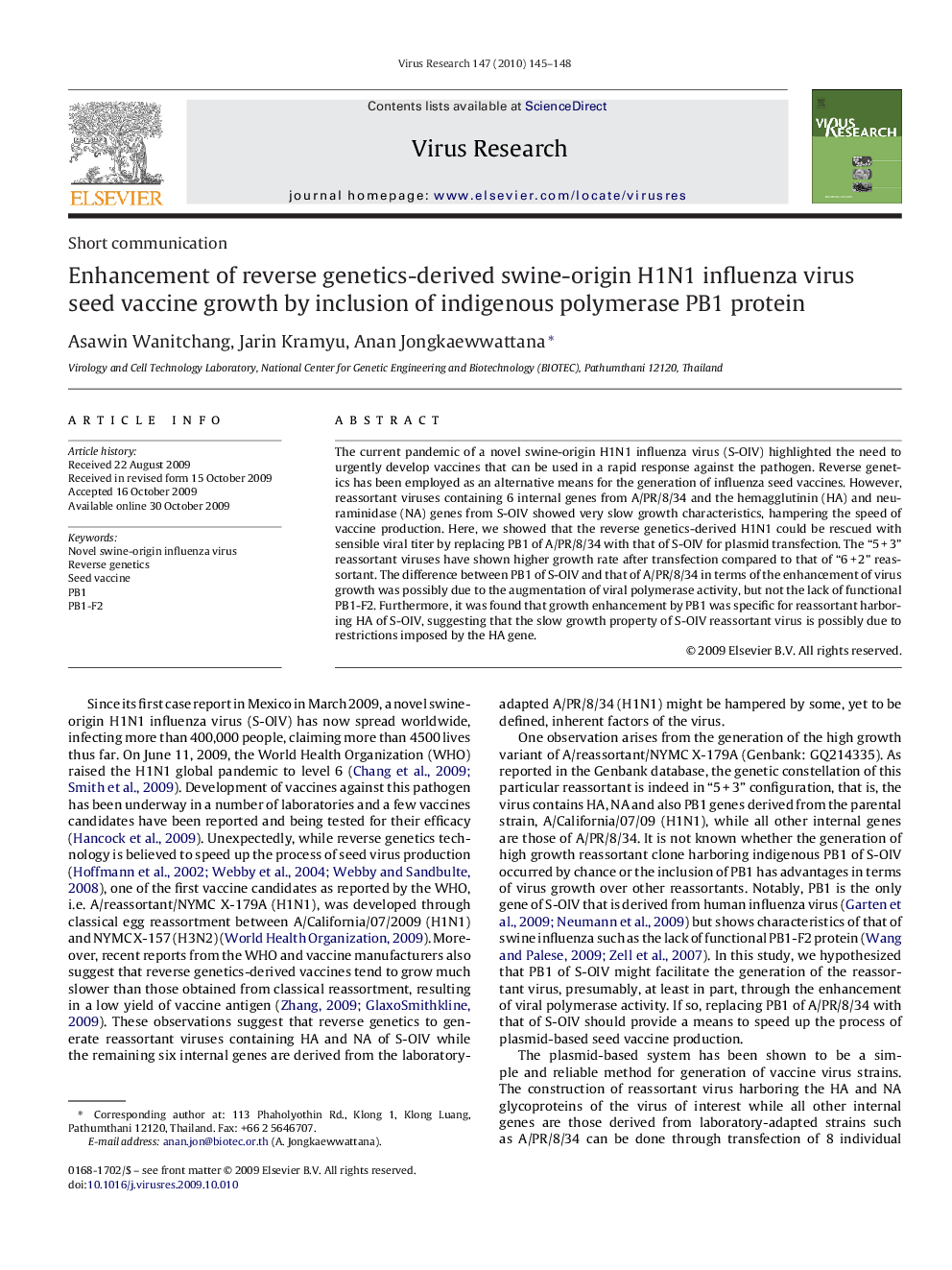| Article ID | Journal | Published Year | Pages | File Type |
|---|---|---|---|---|
| 3429990 | Virus Research | 2010 | 4 Pages |
The current pandemic of a novel swine-origin H1N1 influenza virus (S-OIV) highlighted the need to urgently develop vaccines that can be used in a rapid response against the pathogen. Reverse genetics has been employed as an alternative means for the generation of influenza seed vaccines. However, reassortant viruses containing 6 internal genes from A/PR/8/34 and the hemagglutinin (HA) and neuraminidase (NA) genes from S-OIV showed very slow growth characteristics, hampering the speed of vaccine production. Here, we showed that the reverse genetics-derived H1N1 could be rescued with sensible viral titer by replacing PB1 of A/PR/8/34 with that of S-OIV for plasmid transfection. The “5 + 3” reassortant viruses have shown higher growth rate after transfection compared to that of “6 + 2” reassortant. The difference between PB1 of S-OIV and that of A/PR/8/34 in terms of the enhancement of virus growth was possibly due to the augmentation of viral polymerase activity, but not the lack of functional PB1-F2. Furthermore, it was found that growth enhancement by PB1 was specific for reassortant harboring HA of S-OIV, suggesting that the slow growth property of S-OIV reassortant virus is possibly due to restrictions imposed by the HA gene.
